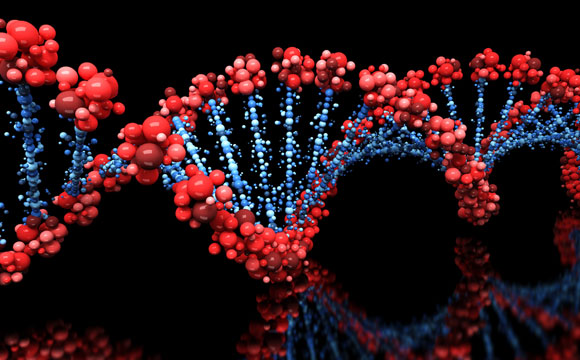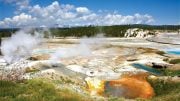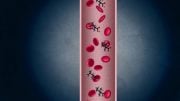
Researchers discover genes for a longer healthier life.
A team of scientists has discovered genes that are involved in physical aging. By influencing only one of these genes, the healthy lifespan of laboratory animals is extended – and possibly that of humans, too.
Driven by the quest for eternal youth, humankind has spent centuries obsessed with the question of how it is exactly that we age. With advancements in molecular genetic methods in recent decades, the search for the genes involved in the aging process has greatly accelerated.
Until now, this was mostly limited to genes of individual model organisms such as the C. elegans nematode, which revealed that around one percent of its genes could influence life expectancy. However, researchers have long assumed that such genes arose in the course of evolution and in all living beings whose cells have a preserved a nucleus – from yeast to humans.
Combing through 40,000 genes
Researchers at ETH Zurich and the JenAge consortium from Jena have now systematically gone through the genomes of three different organisms in search of the genes associated with the aging process that are present in all three species – and thus derived from the genes of a common ancestor. Although they are found in different organisms, these so-called orthologous genes are closely related to each other, and they are all found in humans, too.
In order to detect these genes, the researchers examined around 40,000 genes in the nematode C. elegans, zebrafish, and mice. By screening them, the scientists wanted to determine which genes are regulated in an identical manner in all three organisms in each comparable aging stage – young, mature, and old; i.e. either are they up regulated or down regulated during aging.
As a measure of gene activity, the researchers measured the amount of messenger RNA (mRNA) molecules found in the cells of these animals. mRNA is the transcript of a gene and the blueprint of a protein. When there are many copies of an mRNA of a specific gene, it is very active; the gene is upregulated. Fewer mRNA copies, on the contrary, are regarded as a sign of low activity, explains Professor Michael Ristow, coordinating author of the recently published study and Professor of Energy Metabolism at ETH Zurich.
Out of this volume of information, the researchers used statistical models to establish an intersection of genes that were regulated in the same manner in the worms, fish, and mice. This showed that the three organisms have only 30 genes in common that significantly influence the aging process.
Reduce gene activity, live longer
By conducting experiments in which the mRNA of the corresponding genes were selectively blocked, the researchers pinpointed their effect on the aging process in nematodes. With a dozen of these genes, blocking them extended the lifespan by at least five percent.
One of these genes proved to be particularly influential: the bcat-1 gene. “When we blocked the effect of this gene, it significantly extended the mean lifespan of the nematode by up to 25 percent,” says Ristow.
The researchers were also able to explain how this gene works: the bcat-1 gene carries the code for the enzyme of the same name, which degrades so-called branched-chain amino acids. Naturally occurring in food protein building blocks, these include the amino acids L-leucine, L-isoleucine, and L-valine.
When the researchers inhibited the gene activity of bcat-1, the branched-chain amino acids accumulated in the tissue, triggering a molecular signaling cascade that increased longevity in the nematodes. Moreover, the timespan during which the worms remained healthy was extended. As a measure of vitality, the researchers measured the accumulation of ageing pigments, the speed at which the creatures moved, and how often the nematodes successfully reproduced. All of these parameters improved when the scientists inhibited the activity of the bcat-1 gene.
The scientists also achieved a life-extending effect when they mixed the three branched-chain amino acids into the nematodes’ food. However, the effect was generally less pronounced because the bcat-1 gene was still active, which meant that the amino acids continued to be degraded and their life-extending effects could not develop as effectively.
Conserved mechanism
Ristow has no doubt that the same mechanism occurs in humans. “We looked only for the genes that are conserved in evolution and therefore exist in all organisms, including humans,” he says.
In the present study, he and his Jena colleagues from the Leibniz Institute on Aging, the Leibniz Institute for Natural Product Research and Infection Biology, the Jena University Hospital, and the Friedrich Schiller University purposefully opted not to study the impact on humans. But a follow-up study is already being planned. “However we cannot measure the life expectancy of humans for obvious reasons,” says the ETH professor. Instead, the researchers plan to incorporate various health parameters such as cholesterol or blood sugar levels in their study to obtain indicators on the health status of their subjects.
Health costs could be massively reduced
Ristow says that the multiple branched-chain amino acids are already being used to treat liver damage and are also added to sport nutrition products. “However, the point is not for people to grow even older, but rather to stay healthy for longer,” says the internist. The study will deliver important indicators on how the ageing process could be influenced and how age-related diseases such as diabetes or high blood pressure could be prevented. In light of unfavorable demographics and steadily increasing life expectancy, it is important to extend the healthy life phase and not to reach an even higher age that is characterized by chronic diseases, argue the researchers. With such preventive measures, an elderly person could greatly improve their quality of life while at the same time cutting their healthcare costs by more than half.
Reference: “Branched-chain amino acid catabolism is a conserved regulator of physiological ageing” by Johannes Mansfeld, Nadine Urban, Steffen Priebe, Marco Groth, Christiane Frahm, Nils Hartmann, Juliane Gebauer, Meenakshi Ravichandran, Anne Dommaschk, Sebastian Schmeisser, Doreen Kuhlow, Shamci Monajembashi, Sibylle Bremer-Streck, Peter Hemmerich, Michael Kiehntopf, Nicola Zamboni, Christoph Englert, Reinhard Guthke, Christoph Kaleta, Matthias Platzer, Jürgen Sühnel, Otto W. Witte, Kim Zarse and Michael Ristow, 1 December 2015, Nature Communications.
DOI: 10.1038/ncomms10043









Be the first to comment on "Scientists Discover Genes for a Longer, Healthier Life"